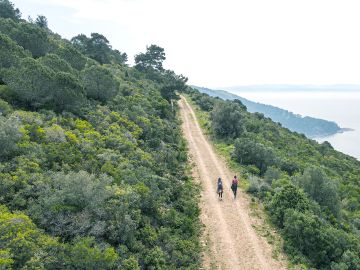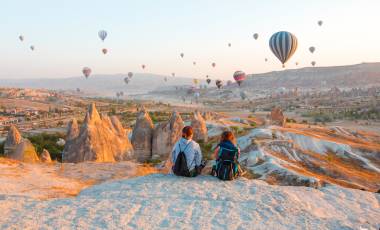I recently completed the Sierra de Aitana trek in Spain with Exodus, and I can confidently say it was an incredible experience. From start to finish, the entire week was filled with breathtaking landscapes, rich history, and a real sense of adventure. The trek itself was challenging but absolutely rewarding, with a variety of terrains that kept things interesting. The views from the top of the Sierra de Aitana were absolutely stunning, with panoramic vistas over the mountains and valleys below.

Walking Holidays in Turkey
Walking Holidays in Turkey
Top 5 Places to Visit on Walking Holidays in Turkey
Cappadocia: Piercing the skyline with its fantastical rocky pillars, Cappadocia is a dreamlike vision that attract visitors from across the world. These curious, geological wonders rise up against a canvas of rugged hills in central Turkey and are known as the ‘fairy chimneys’ owing to their distinctive formations. One of the best ways to witness these natural wonders is by hot air balloon which gives you a bird’s-eye perspective of this almost unreal landscape. Back on the ground, you might also get to see the equally interesting wildlife such as the Eurasian fox or the hoopoe.
Kaymakli: Also located in Cappadocia is the underground city of Kaymakli. Built by Christians as far back as the 7th-century BCE, Kaymakli is a labyrinth of tunnels, caves and ancient homes and settlements where the local people would hide to avoid attack from the Byzantine invaders. It’s hard to imagine that inhabitants lived in this underground city and created everything from kitchens and living areas to stables and there’s even a church and graveyard. At one time a staggering number of people, around 3,500, lived inside Kaymakli City.
Goreme Open-Air Museum: Believed to be a Byzantine monastic settlement and a pilgrimage site in later years, Goreme Open-Air Museum is now a UNESCO World Heritage Site and one of the greatest of its kind. The museum is a fine example of Byzantine art and architecture and is home to an incredible complex of churches, chapels and monasteries cut into the volcanic rock. Inside each of the structures you’ll find beautiful frescoes that depict life in times gone by. The 11th-century Chapel of St Basil is particularly fascinating with its paintings of St Basil himself, a Maltese cross and St George slaying a dragon. The Dark Church is another highlight of Goreme Open-Air Museum and was so named owing to its lack of windows. Because of the lack of light in the church, its frescoes have hardly faded and still retain their vibrancy.
Akvadi Valley: Also known as White Valley, Akvadi is one of the most popular walking areas in Cappadocia and also one of the most diverse valleys. There are several walking trails that lead you through surreal landscapes made up of white rocks, orchards, vineyards and fairy chimneys. As you walk along the ancient river path, there’s a real sense of calm and you’ll be enthralled by the stunning scenery.
Arycanda: The ancient Lycian city of Arycanda lies on mountain terraces overlooking a pretty valley. It’s believed the city dates all the way back to Anatolian times and had several rulers throughout history, from the Persians and Alexander the Great to Seleucids. It is one of the oldest cities in Lycia and suffered from the great earthquake in 240 AD. Explore the Acropolis to see Hellenistic ruins, the Temple of Helios and Roman ruins. The well-preserved theatre is worth visiting to see its coloured marbles and the bust of Emperor Hadrian.
Gowtham Avula Sierra de Aitana Trek
Chris Nixon Walking in Puglia & MateraA week of varied walking. The Trulli houses are very interesting. And the cave dwellings in Matera are amazing. Some walks are more interesting than others. All at a moderate pace.
Celia Murray Walking in AndaluciaA perfect blend of gentle walks, amazing views and accommodation that felt like a private house party.
The Adventure Begins Here
Get regular inspiration straight to your inbox from Exodus’ experts.
